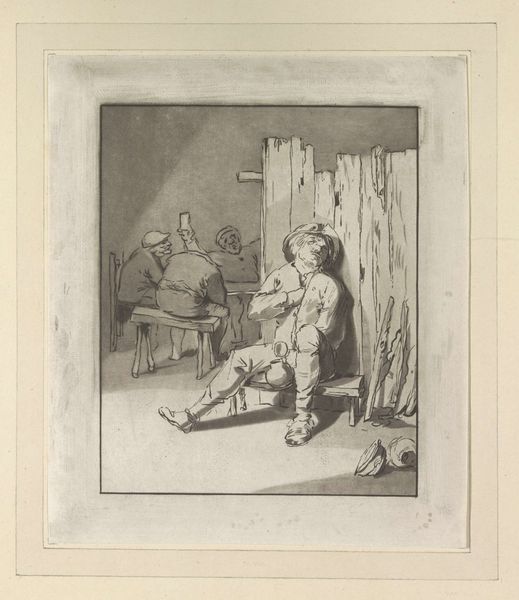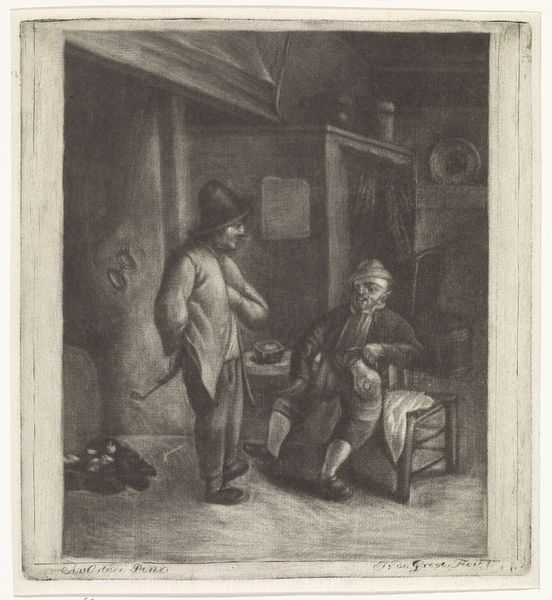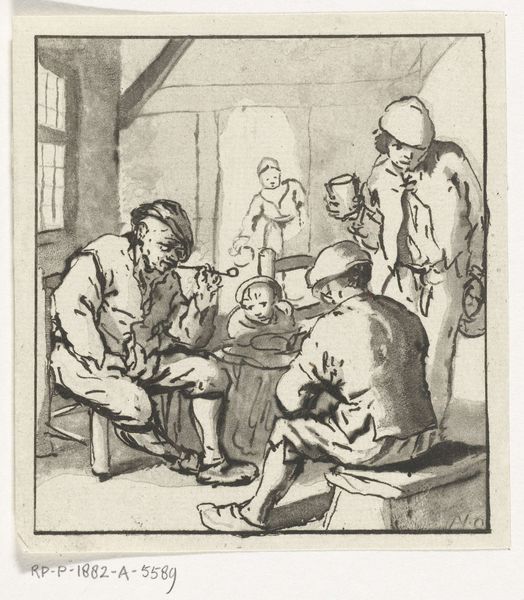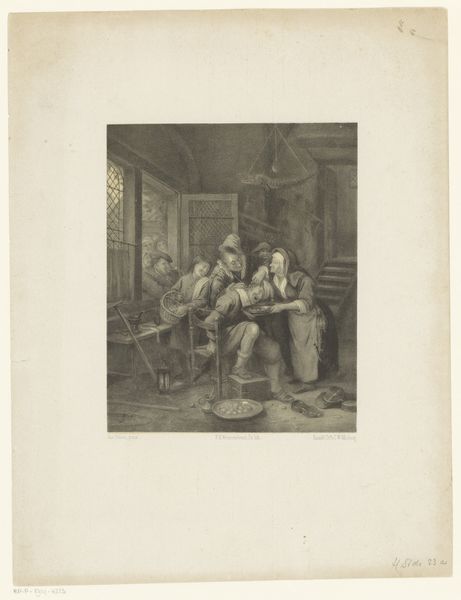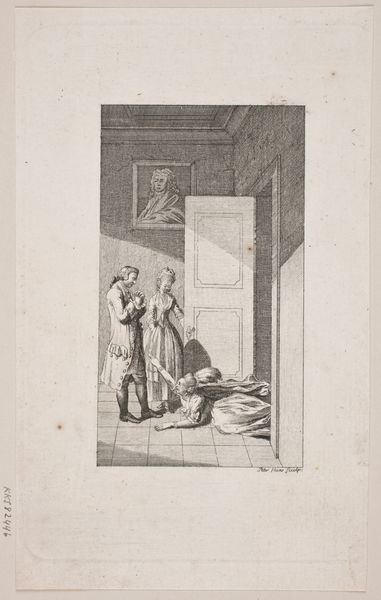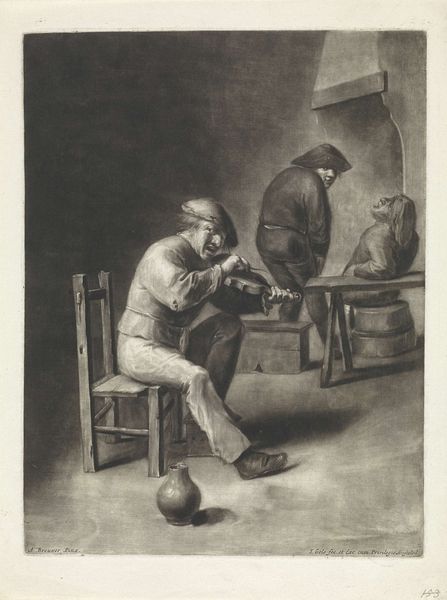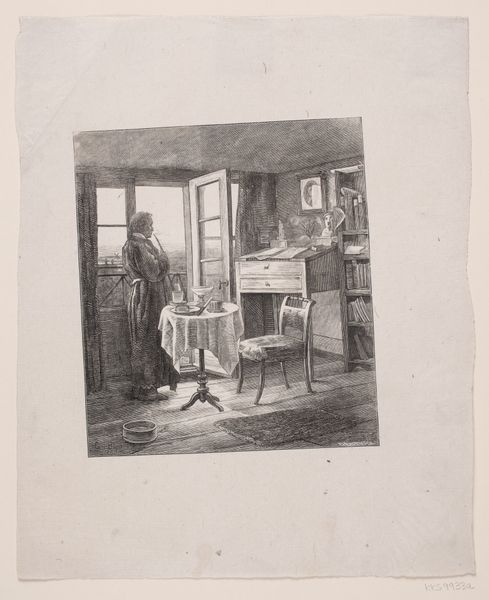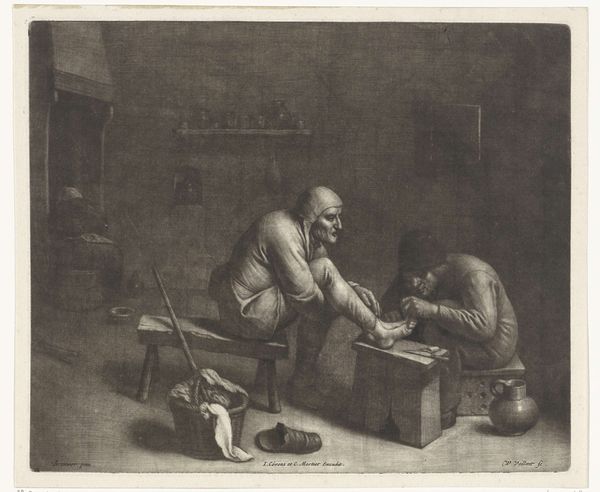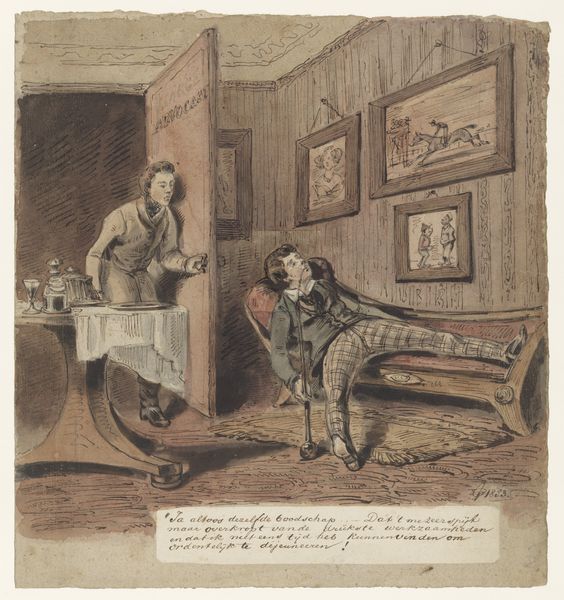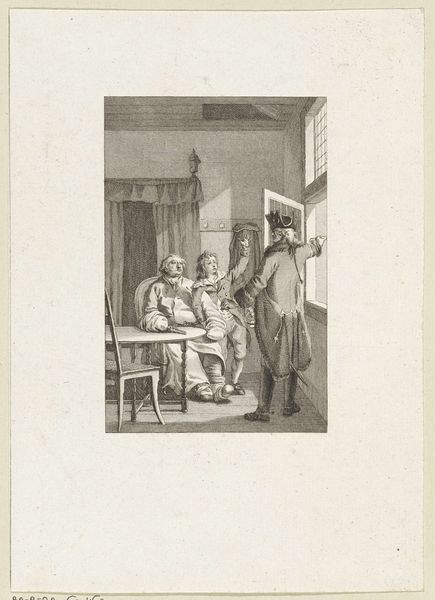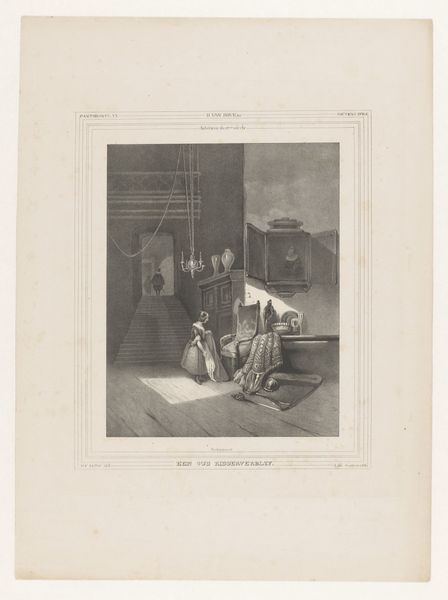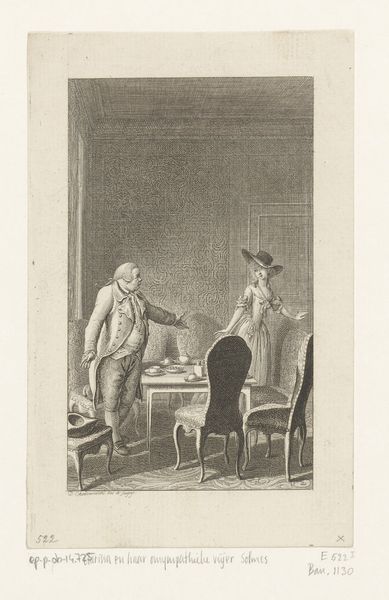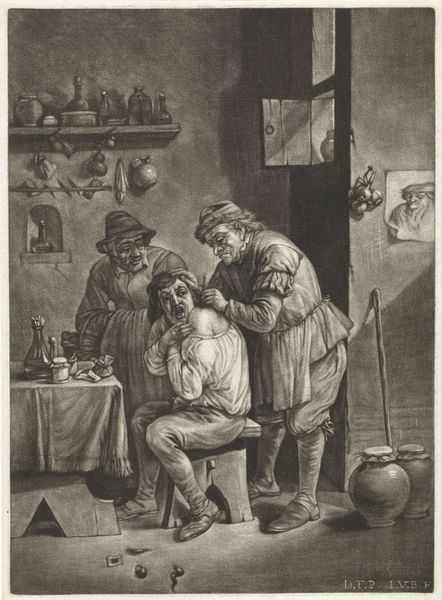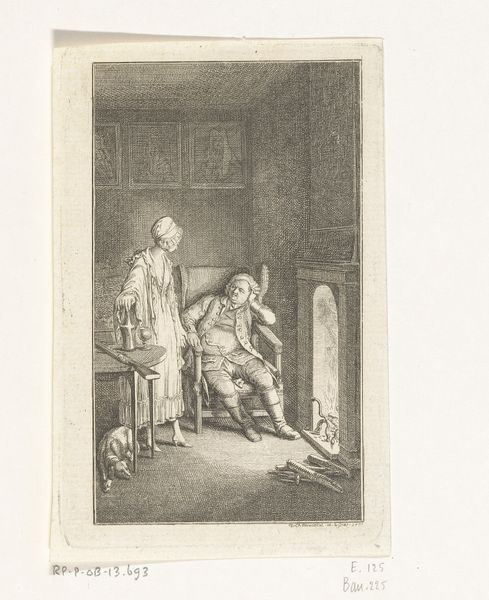
drawing, paper, ink
#
drawing
#
narrative-art
#
figuration
#
paper
#
ink
#
romanticism
#
genre-painting
Copyright: Public Domain
Curator: This drawing, rendered in ink on paper, is entitled "Häusliche Szene (Pestalozzis Lienhard und Gertrud)" or "Domestic Scene (Pestalozzi's Lienhard and Gertrud)", created by Franz Pforr sometime before 1810. Editor: My first thought? A heavy melancholy, like a wet blanket on a very long Tuesday. The grayscale emphasizes the bleakness. Everyone seems huddled, exhausted. Curator: Indeed. Pforr was deeply interested in portraying scenes of everyday life infused with moral messages, reflecting the influence of Johann Heinrich Pestalozzi, the Swiss educational reformer. Pforr's narrative is less a celebration of domesticity and more a somber commentary on its burdens. Editor: I can almost feel the weight of her exhaustion! She's surrounded by her children, but there's no joy in her face, only a bone-deep weariness. The man in the doorway is like a looming shadow, a symbol of expectation perhaps. Curator: It’s quite likely the husband. Pforr’s social circle—which was steeped in Romantic ideals—looked to artwork for representations that both idealized past eras but commented on pressing societal realities. It has to be viewed through the lens of the societal pressures placed on women of the time. Editor: Right! And the single candle – it provides only a tiny flicker of hope against so much encroaching darkness. I feel a very immediate, emotional connection to the vulnerability of the subjects here, and even something gothic, looming just behind the ordinary. Curator: I agree. The intimate, almost claustrophobic interior and the expressive use of light and shadow add to that sense of drama and psychological depth. It elevates a seemingly simple domestic scene into a potent statement about the human condition, a real concern for Pforr, typical of artwork made within Romanticism. Editor: Pforr seems to be implying there's both great strength and great suffering intertwined in these commonplace moments, that these intimate scenes are full of drama. Thanks for shedding light on how this artwork helps reflect, perhaps, our present moment as much as it depicts another. Curator: Absolutely, considering the cultural context around art objects deepens our perspective of artworks and allows them to maintain relevance today.
Comments
No comments
Be the first to comment and join the conversation on the ultimate creative platform.
